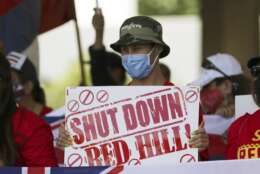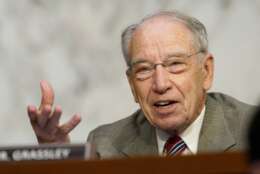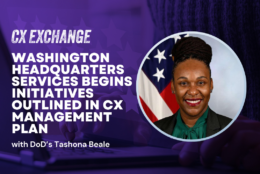Defense
-
More than a dozen military families in Hawaii spark trial over 2021 jet fuel leak that tainted water
A trial for a mass environmental injury is starting more than two years after a jet fuel leak in Pearl Harbor's drinking water poisoned thousands of people.
April 29, 2024 -
For DOJ employees, a recent return-to-office survey shows a clear difference in employee retention between those who can telework, and those who can’t.
April 29, 2024 -
The latest iteration of Naval Sustainment System-Supply moves beyond costs of readiness, tries to translate them for other "upstream" stakeholders.
April 29, 2024 -
Matthew Isnor, who leads cyber workforce development in DoD’s CIO’s office, said a new policy expands the number of job categories in the cyber workforce.
April 26, 2024 -
On its journey to Zero Trust, the DoD must secure a multi-cloud environment with a common defensive layer. Here’s how it can succeed.
April 26, 2024 -
The Defense Counterintelligence and Security Agency is one of the federal government’s newest HISP agencies.
April 26, 2024 -
Employees reported buying COVID-related services, but those turned out to be things like plumbing repairs and NordicTrack ski machines.
April 26, 2024 -
A 100-day implementation plan for the Army's acquisition community aims to resolve the issues that might get in the way of AI adoption
April 26, 2024 -
The CX director for Navy’s PEO MLB shares how her team engages employees, sailors and Marines to get feedback.
April 25, 2024 -
You hear a lot about zero trust controls in government tech circles. Could this approach to cybersecurity be applied to protecting space assets?
April 24, 2024 -
Lung tissue analysis has shown [in detail] some serious threats to the health of military service members.
April 24, 2024 -
A new group within DoD seeks to track how well new technology makes its way to the troops.
April 24, 2024 -
“I think the great discussion is how much are you willing to go to commercial? Is it 30%, or 40%, or 50%?” said Lt. Gen. Shawn Bratton.
April 23, 2024 -
The review also uncovers a leadership failure to do historical comparisons to identify year-to-year trends in harassment.
April 23, 2024 -
WHS’ customer experience strategist shares details about how the organization intends to improve experiences and services delivery for its customers.
April 22, 2024
















